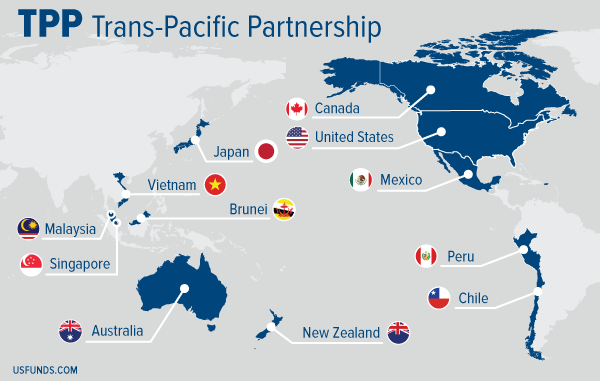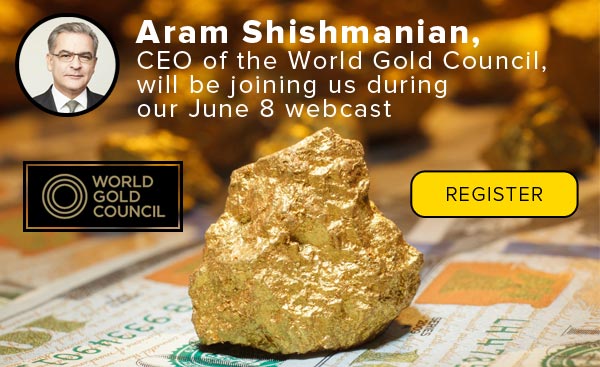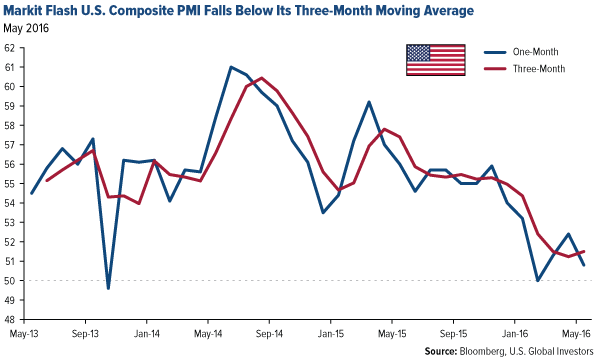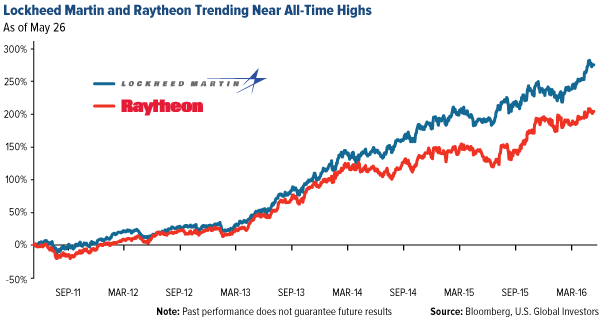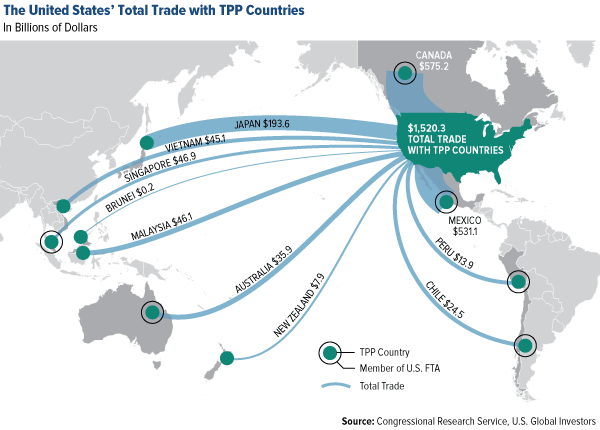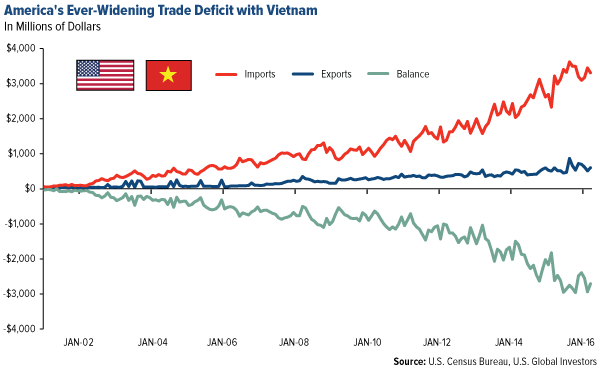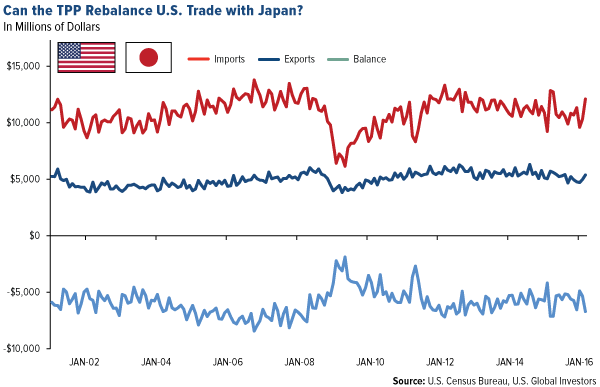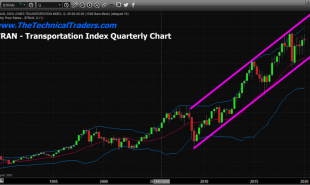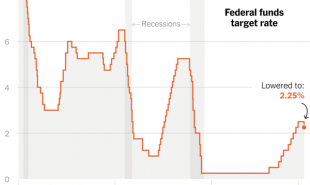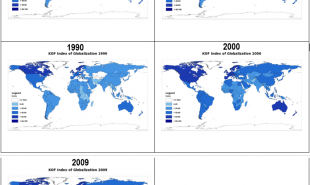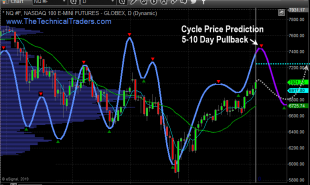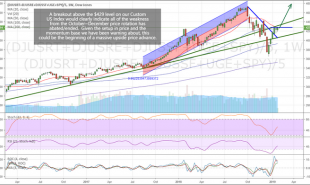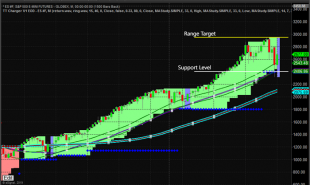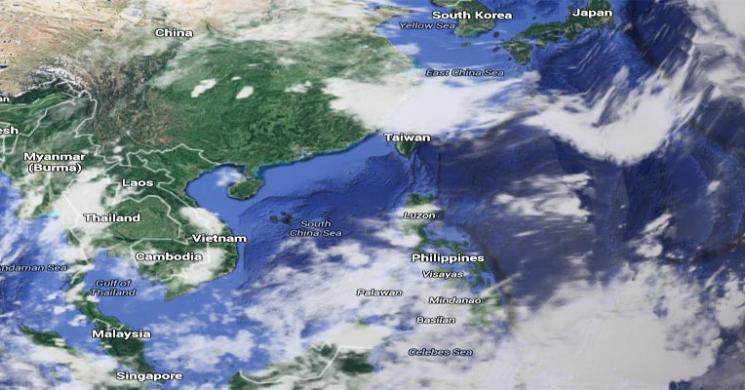
Last week, President Barack Obama was in Vietnam and Japan drumming up additional support for the Trans-Pacific Partnership (TPP), and meanwhile I was in the U.K., where Brexit drama is dominating headlines and airwaves. Only a month remains before voters decide whether the country will stay in or leave the European Union. As I said before, an exit could trigger a currency crisis with both the euro and pound, in which case owning gold might be a good idea.
Speaking of the yellow metal, I had the opportunity to meet with the World Gold Council (WGC) while I was in London. It’s a pleasure to share with you that the group’s CEO, Aram Shishmanian, has agreed to join me as a special guest during our next webcast, scheduled for Wednesday, June 8. We’ll be discussing gold, specifically the reasons behind its rally this year and the pullback we’re seeing this month. I highly urge you to register for the webcast because you won’t want to miss Aram’s rich insights into gold.
As Oil Hits $50 a Barrel, Americans Hit the Road
I was disappointed to see that U.S. manufacturing activity showed more signs of slowing growth, according to preliminary purchasing managers’ index (PMI) data. The PMI posted a 50.8, just above the neutral 50.0 threshold separating expansion and deterioration. What’s more, the index fell below its three-month moving average, which we’ve found to be a headwind for commodities and energy three to six months out.
This could threaten additional recovery in the oil and gas industry. For the first time this year, West Texas Intermediate crude briefly touched $50 a barrel on Thursday last week. Prices between $50 and $60 are widely seen as a “goldilocks” scenario: high enough for oil companies to stay profitable yet low enough for consumers.
Gas prices, in fact, were expected to be the lowest in 10 years this Memorial Day weekend, according to the American Automobile Association (AAA). The motor club estimated prices would average around $2.26 a gallon, or 45 cents less than last year. More than 38 million Americans were expected to travel this past weekend, AAA says, the second-highest volume on record. If you’re one of them, I wish you happy, safe travels! But however you plan on spending the weekend, remember to honor those who bravely served the U.S. and gave the ultimate sacrifice.
The U.S. Can Now Export Weapons to Vietnam
Last Monday, Obama lifted the 40-year-old weapons embargo against Vietnam, ending what many see as the last vestige of the U.S. and Southeast Asian country’s former animosity. It was also part of his administration’s “pivot” to Asia to deepen relations with countries in the fastest growing region of the world.
Indeed, Vietnam is in an exciting position right now. In the fourth quarter of 2015, its gross domestic product (GDP) growth rate expanded an impressive 7.01 percent, and Goldman Sachs predicts its economy will become the 17th largest by 2025, up from 55th today. The most populous city, Ho Chi Minh City, commonly known as Saigon, has blossomed into one of the world’s premier manufacturing and tech startup hubs, with huge investments flowing in from companies such as Samsung and Intel.
Vietnam’s defense spending has also been growing rapidly in recent years, and today a lot of business is up for grabs. Between 2011 and 2015, the country was the world’s eighth largest arms importer, just one rung above the U.S., according to the Stockholm International Peace Research Institute (SIPRI). This year it’s expected to spend $5 billion, a dramatic increase from the estimated $1 billion it spent in 2005.
With the embargo out of the way, American aerospace and defense contractors such as Lockheed Martin and Raytheon have the opportunity to move into this new Asian market. Boosted by recent geopolitical fears and terrorist activity, both companies are trending near their all-time highs.
They also provide attractive dividends, which are increasingly sought-after in a world that’s seen a third of all government bond yields around the world turn negative.
Read how negative interest rates are also pushing foreign investors into American muni bonds!
Selling the TPP
One of Obama’s main objectives in visiting Vietnam and Japan was to shore up support for the TPP, the historic trade agreement that, if ratified by all 12 participating countries, is designed to eliminate as many as 18,000 tariffs. Sixteen to 30 years after ratification, 99 percent of all goods trade among these countries will be entirely liberalized.
In the map below, you can see the massive scale of who’s involved. TPP countries have a combined GDP of $28 trillion, close to 40 percent of world GDP, and they account for almost a quarter of total world exports.
Vietnam has the most to gain from the TPP Eliminating thousands of tariffs should allow its important apparel and textile industry to export even more goods to the U.S. In turn, the U.S. would have the opportunity to sell more vehicles in the Asian country. The World Bank estimates a 10 percent bump in Vietnam’s economy over a decade as a result of the deal.
Among the TPP countries, the U.S. runs the largest trade deficit, which widened to $57.5 billion in April. As you can see, the U.S. has an unfavorable (and worsening) trade gap with Vietnam (-$2.7 billion in March) and Japan (-$6.7 billion). The TPP could help rebalance this.
According to the Peterson Institute for International Economics (PIIE), the TPP “will increase annual real incomes in the United States by $131 billion, or 0.5 percent of GDP, and annual exports by $357 billion, or 9.1 percent of exports, by 2030.” For all member nations, the deal is expected to add $492 billion in real income.
Challenges Ahead
Of course, none of this will come to pass if the TPP can’t be ratified. The PIIE warns that delaying the TPP’s launch by even a year could lead to a permanent opportunity loss of between $77 billion and $123 billion for the U.S. Obama has repeatedly said he wants to see it passed by the end of 2016.
But a delay at this point appears highly possible, with both major U.S. presidential candidates opposing it. Support in Congress is muted. Of the 12 TPP countries, only Malaysia has ratified it.
There’s still strong support for the deal. The U.S. Conference of Mayors, responding to recent positive findings by the International Trade Commission, wrote an open letter asserting its support, stating that passage of the TPP is critical for the U.S. to remain a leader in the global marketplace.
I agree. The deal is far from perfect, but it’s what we need now to help reignite global growth.
All opinions expressed and data provided are subject to change without notice. Some of these opinions may not be appropriate to every investor. By clicking the link(s) above, you will be directed to a third-party website(s). U.S. Global Investors does not endorse all information supplied by this/these website(s) and is not responsible for its/their content.
The Purchasing Manager’s Index is an indicator of the economic health of the manufacturing sector. The PMI index is based on five major indicators: new orders, inventory levels, production, supplier deliveries and the employment environment. Composite PMIs are published monthly by Markit Economics in conjunction with sponsors, and are based on surveys of over 400 executives in private sector service companies. The surveys cover transport and communication, financial intermediaries, business and personal services, computing & IT and hotels and restaurants.
There is no guarantee that the issuers of any securities will declare dividends in the future or that, if declared, will remain at current levels or increase over time.
Holdings may change daily. Holdings are reported as of the most recent quarter-end. The following securities mentioned in the article were held by one or more accounts managed by U.S. Global Investors as of 3/31/2016: Lockheed Martin Corp., Raytheon Co.
Read more by Frank Holmes


